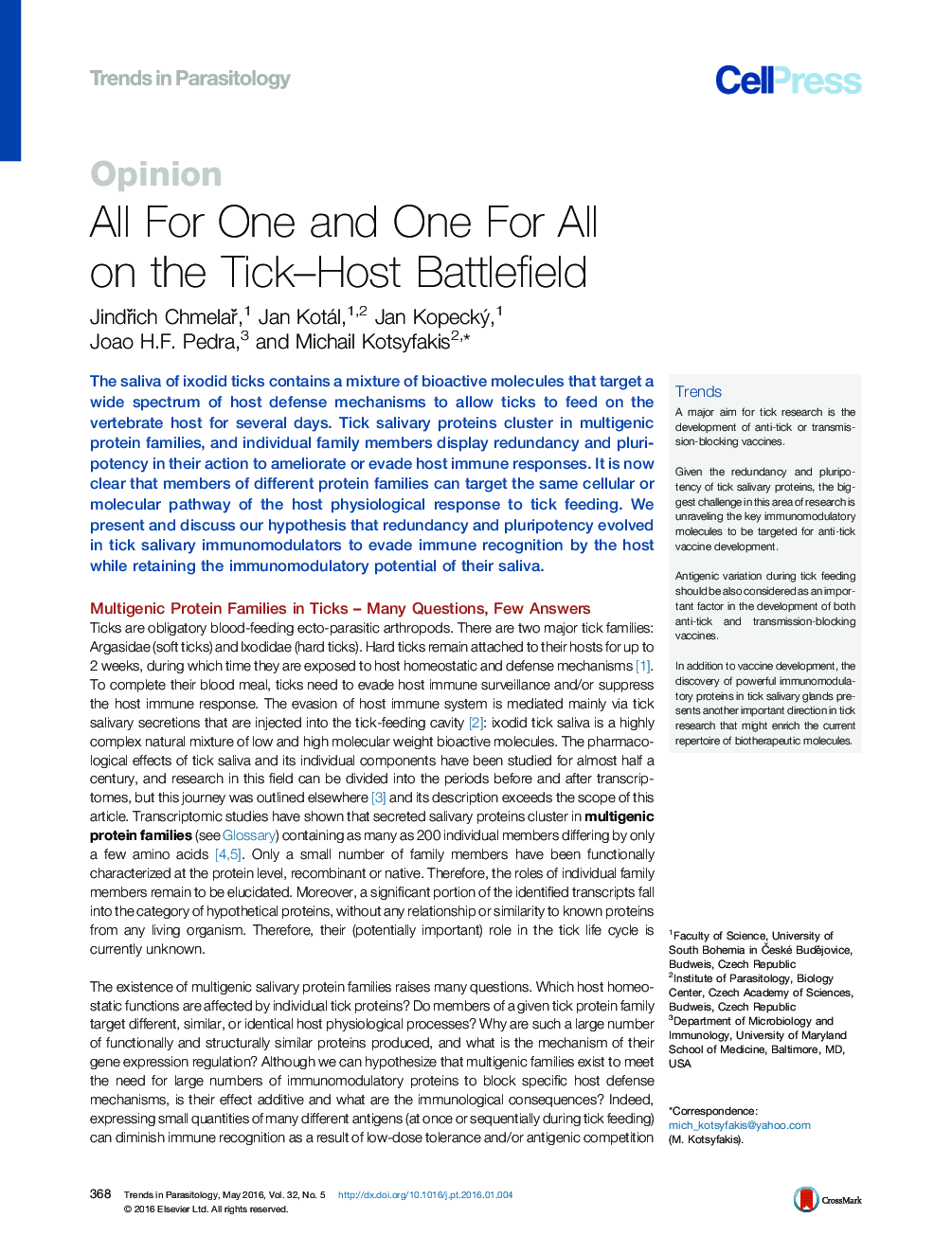| Article ID | Journal | Published Year | Pages | File Type |
|---|---|---|---|---|
| 3422920 | Trends in Parasitology | 2016 | 10 Pages |
The saliva of ixodid ticks contains a mixture of bioactive molecules that target a wide spectrum of host defense mechanisms to allow ticks to feed on the vertebrate host for several days. Tick salivary proteins cluster in multigenic protein families, and individual family members display redundancy and pluripotency in their action to ameliorate or evade host immune responses. It is now clear that members of different protein families can target the same cellular or molecular pathway of the host physiological response to tick feeding. We present and discuss our hypothesis that redundancy and pluripotency evolved in tick salivary immunomodulators to evade immune recognition by the host while retaining the immunomodulatory potential of their saliva.
TrendsA major aim for tick research is the development of anti-tick or transmission-blocking vaccines.Given the redundancy and pluripotency of tick salivary proteins, the biggest challenge in this area of research is unraveling the key immunomodulatory molecules to be targeted for anti-tick vaccine development.Antigenic variation during tick feeding should be also considered as an important factor in the development of both anti-tick and transmission-blocking vaccines.In addition to vaccine development, the discovery of powerful immunomodulatory proteins in tick salivary glands presents another important direction in tick research that might enrich the current repertoire of biotherapeutic molecules.
